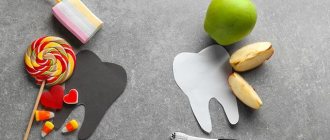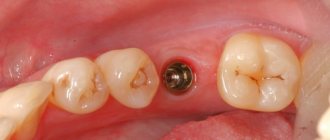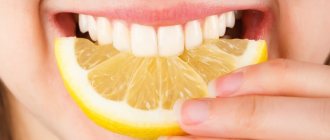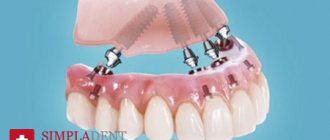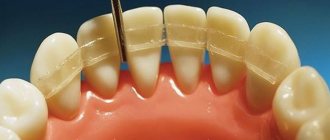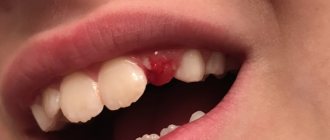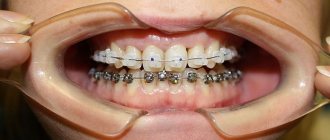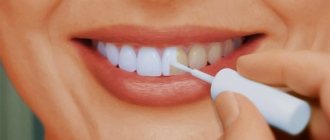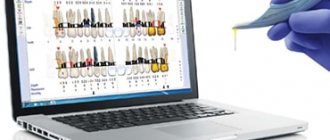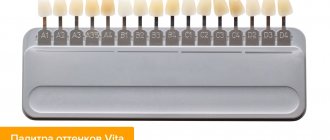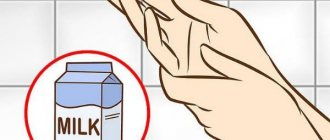Margarita Morozova “Popular Mechanics” No. 3, 2018
The shock and awe of visiting the dentist is familiar to us since childhood. And many adults feel overwhelmed by the jingling of instruments, and sometimes by the mere sight of a dental clinic. As a result, despite all the successes of modern medicine, there is practically no hope for a future without caries. But it is this, together with periodontitis, that is the main cause of tooth loss in people of all ages. The problem stimulates the search for new treatment methods, including in the field of bioengineering. Methods that will allow you to forget about fillings and crowns and simply grow new healthy teeth instead of damaged ones.
Tissue engineering in dentistry has been used since the era of the pharaohs: the oldest known dental implants were found by archaeologists in Egypt. Among them are teeth that were reimplanted into the woman in place of the lost ones and were partially integrated with living tissue. An artificial tooth was discovered in a man's jaw, expertly carved from a mollusk shell 5,500 years ago. But despite the impressive period, complete treatment for a patient with adentia, that is, complete or partial loss of teeth, still does not exist.
Background
around 330 BC Aristotle describes the regeneration of the tip of a lizard's tail. 1950s Two types of stem cells are found in the bone marrow: hematopoietic precursors of blood cells and mesenchymal precursors of bone and cartilage tissue, including teeth. 1981 For the first time, mouse embryonic stem cells have been isolated and grown in vitro. 1985 Stem cells have been found in human dental pulp. 1998 Successful isolation and laboratory cultivation of human embryonic stem cells. 2000 It has been shown that mesenchymal stem cells in the pulp are capable of regenerating dentin-like tissue complexes. 2003 It is possible to isolate a population of stem cells from the still living remains of a decayed tooth. 2004 Finding stem cells in the periodontal ligament, which holds the tooth in place. 2006 Mature differentiated cells from mice have been successfully “reprogrammed” into stem (induced pluripotent) cells. 2007 Induced pluripotent stem cells are derived from human fibroblasts. 2010 Dentin-like complexes were grown from pulp stem cells on an artificial scaffold.
Own or artificial
Orthopedic structures and implants to some extent compensate for the functions of a lost tooth, but these artificial substitutes lack blood vessels, nerve endings and receptors. In addition, they do not form the periodontal ligament, the layer of connective tissue between the tooth root and the bone that forms the wall of the socket. The periodontium helps secure the tooth in the alveolus and ensures its mechanical stability: the strength of the human chewing muscles is as much as 390 kg, and the ligament distributes this pressure between the teeth.
Unlike a tooth, an implant is immobile, and the development of connective tissue around it often ends in inflammation (peri-implantitis) and requires removal of the artificial tooth. In addition, the implant cannot be connected into one structure with the patient’s teeth precisely because of the inability to adequately distribute pressure due to the absence of periodontal tissue. Finally, an implanted substitute requires a much more careful attitude to oral hygiene, which again brings us back to the main source of our problems, the “human factor”. Obviously, the ideal solution would be the technology of growing real living teeth, rather than transplanting artificial ones. So let's get down to business.
The earliest sign of tooth development is the formation of the dental lamina, a horseshoe-shaped thickening of epithelium that extends along the upper and lower jaws of the embryo. After passing through several stages, it forms the roots of individual teeth. Coordination of this process is ensured by at least four epithelial signaling centers, the cells of which secrete substances that regulate tooth formation.
All of the above will also be useful to us for creating new teeth using tissue engineering methods. The “recipe” for growing any biological tissue requires three basic components: stem cells, an extracellular matrix (the scaffold that provides support for developing cellular structures) and, finally, growth factors, combined into the signaling pathways necessary for tooth development. Let's go in order and start with the main characters - stem cells that have odontogenic competence and are capable of developing into dental tissue.
Is it possible to grow teeth?
And ask your friends and acquaintances, maybe someone’s teeth have grown on their own. Actually, there are a lot of such cases. They are simply considered an accident. But when there are many such accidents, you already understand that it is possible to grow teeth yourself. You just need to make them grow!
Is it possible to subjugate the body, by the power of thought to force it to do what we need? Remember Dikul V.I. He was a circus performer. As a result of the injury, he damaged his spine. The lower half of his body did not obey him at all. But he didn't give up, he believed in himself. Dikul V.I. I was able to force my body to heal! And after six years of living in a wheelchair, his legs finally began to obey him.
One day I came across the story of a man who grew more than a dozen teeth. At first I didn’t believe that this was possible. But upon reflection, I realized that this is not possible. You just need to want it and do everything possible for it. The download link for this story will be below in the text.
Dental stem cells
Unlike most mature cells, stem cells are able to undergo many divisions and gradually specialize, forming different types of cells. Embryonic stem cells are totipotent and can develop into any of more than 200 types of adult cells. Postnatal stem cells remain in the tissues of the adult body. They are multipotent, that is, they are able to give rise to only certain types of cells, and are localized in the corresponding tissues, be it bone marrow, blood vessels, liver, skin or dental tissues.
Depending on the location, dental stem cells (DSCs) are divided into stem cells of the pulp, extracted primary teeth, periodontal ligament, gums, dental follicle precursor cells, etc. This gives us many opportunities to obtain them. Pulp stem cells can be isolated directly from extracted teeth - this is a convenient and promising source of DSCs, suitable for the restoration of both dentin, pulp and cement, and bone tissue. In addition, they exhibit pronounced neuroregenerative activity, inhibiting the death of neurons, astrocytes and oligodendrocytes after injury, accelerating the recovery of damaged axons. The population of stem cells from extracted primary teeth can differentiate into cells of bone and nerve tissue, and DSCs from the gums are suitable for the restoration of periodontal tissue, muscles, and even tendons.
The mechanisms of development of odontogenic stem cells have not been fully elucidated, but more than 200 genes operating in them have already been identified. It is clear that each type of DSC has its own characteristics, which promise their use not only in dentistry, but also in other areas of medicine. Another stem cell resource for growing teeth remains induced pluripotent stem cells (iPSCs), obtained by “reprogramming” adult differentiated cells through treatment with a special cocktail of signaling molecules. Scientists continue to develop safe methods for creating iPSCs and using them.
One of the healing methods
Many people know about the great power of the image of M. Babaji. There are also many people who have been healed by watching Sergei Veretennikov’s videos with the image of the great Guru and a special soundtrack that enhances the effect of his presence. Babaji's powerful mantra goes like this:
- Om Mahavatara Vidmahe
- Sat Gurudeva Demahi
- Tanno Babaji Prahodayat.
Om is the original, primordial vibration of creation, the beginning of everything. Mahavatara Vidmahe is a famous big Avatar. Sat Gurudeva Demahi - we meditate and reflect on the Divine Teacher of Truth. Tanno Babaji Prahodayat - we pray to Babaji for enlightenment.
In addition to healing with the help of images, Veretennikov developed a whole system where a person is healed by activating the internal forces and hidden capabilities of his body.
Intercellular matrix
But the resource of stem cells for growing teeth is not even half the battle. For the development and formation of a complex structure of mature tissue, a support, a scaffold of intercellular matrix molecules is required: it is this that supports the attachment, migration and spatial organization of cells. The gaps and pores in it ensure the movement of cells, growth factors and metabolism. An artificial scaffold must be easy to use, biocompatible, degradable in the body and low immunogenicity, good mechanical properties, etc.
Among the synthetic materials for scaffold formation, it is worth mentioning “bioactive” glass, which can grow together with biological tissues, polylactic acid and composites based on metal, ceramics or polymers. All of them make it possible to produce scaffolds of the required shape, although their use remains very limited due to low biocompatibility and toxicity. In contrast, natural biomaterials for scaffolds—such as collagen, chitosan, or hyaluronic acid—are biocompatible and easily biodegradable. However, they are less durable and can cause rejection reactions.
In any case, the ideal scaffold material would be a structure derived directly from natural extracellular matrix polymers or from their synthetic analogues. Pulp and periodontal stem cells growing on such a scaffold, when treated with appropriate signal substances, successfully developed in the odontogenic direction - towards the formation of tooth tissue. However, we will return to this later, but for now we need a third type of ingredients.
How you can control your health with the power of your thoughts
I remembered my service in the army. Called up for service from home. When I got into the army, I immediately realized that no one would help you here and it was better not to get sick here at all. The army is not a home, there is no caring mother, there is no medicine and tea with raspberry jam. And here you can only rely on yourself.
I realized this and did not relax throughout the service. With the power of thought, I forced my body to tune in to health. Some internal reserves and capabilities of the body were activated. And I served far from being in hothouse conditions in the Kirov region. And in winter the temperature often reached more than forty degrees. And spring and autumn slush! But not once in two years did I even sneeze!
I also remembered working at the mine. I ruined my spine there. I suffered from constant pain in my lower back. Getting up in the morning was a big problem. If you want to put on socks, at least call someone. I suffered for seven years with lumbar and then cervical chondrosis. The neurologist said that my spine is like that of a seventy-year-old...
That's it, nowhere else! I was about forty years old. I read somewhere that you need to move more. How to move? Every movement causes pain. However, more about this in the article How I overcame lumbar chondrosis. As a result, for the last six years, I don’t remember chondrosis at all! Surely you will find the same examples.
Signaling pathways
Stem cells are our main resource, the scaffold is the basis for its development, but their interaction must be orchestrated by signaling molecules, including growth factors and interfering RNA. Growth factors are peptide molecules that transmit signals to control cellular behavior through action on specific receptors on the surface of cells. They provide interconnection and interaction between cells, as well as between them and the extracellular matrix. So, if the carious cavity is close to the sensitive pulp or the patient experiences increased tooth wear, the corresponding growth factors trigger the formation of secondary and tertiary dentin. A number of growth factors have also been identified that act during tooth development, such as bone morphogenetic protein (BMP), platelet-derived growth factor (PDGF) and fibroblast growth factor (FGF). They are delivered to stem cells using nanoparticles or through the scaffold itself, filling it with the desired set of molecules.
Interfering RNA molecules are also used to control cell differentiation. They bind to messenger RNA and stop the synthesis of a particular protein. For targeted delivery, such RNA is converted into DNA and transferred into a cell in the form of a plasmid. Now we have everything we need to obtain a tooth: dental stem cells (assorted), scaffold (product identical to natural) and growth factors (to taste).
How to grow your teeth with the power of your thoughts
How to grow your own teeth? You need to perform certain actions. See below for an approximate algorithm for these actions.
1. You need to learn to hear and listen to your body. You need to calm down, take your mind off the daily hustle and bustle. We need to tune in to the result. 2. Remember the sensations when your teeth grew, when they erupted, and itched. 3. Imagine the process of teeth growth itself. 4. And remember, repeat these sensations regularly several times a day, preferably every hour.
However, the man himself, who grew seventeen teeth, can tell this better. Download Mikhail Stolbov's story about how he grew his teeth with the power of thought.
Unfortunately, in our fussy and nervous age, very few will be able to calm down and listen to their body. And to do this for some time, during which the teeth grow... Who can do this? And how great it would be, instead of old teeth falling out, to grow new teeth yourself.
The recipe is ready
The basic principles of dental tissue engineering have already been developed, and attempts to move on to practical application have been made for more than a decade and a half. English scientists can be called pioneers in growing teeth, who began such research back in 2002. And although their experiments on the regeneration of hard dental tissues did not bring much results, soon scientists from Takashi Tsui’s team conducted more successful experiments that lasted about two years. After solving a number of problems, they managed to isolate dental stem cells from mouse embryos, “assemble” a bioengineered rudiment from them, grow a full-fledged tooth from it and implant it into the jaw of a mouse.
The protocol prepared by Japanese specialists during this work has become one of the key guidelines used by scientists for experiments in the field of tissue engineering. Russian scientists from the Evdokimov Dental University (MGMSU) also relied on it: in 2022, they managed to conduct their own successful experiments in growing mouse teeth. Human teeth are more complex and bulky, and it is not yet possible to grow them. Problems remain unresolved related to the innervation and blood supply of the “bioengineered” tooth, its ligamentous apparatus, and most importantly, the choice of the pool of stem cells.
The fact is that you can get human DSCs from a healthy tooth (by damaging it) or from a tooth with the pulp removed. Available cells, such as gum stem cells, do not have odontogenic ability. It is still yet to be learned how to obtain the necessary DSCs from existing resources or induced pluripotent stem cells. However, there is no doubt that after some time, bioengineering of teeth will help both adults and children completely forget about the trepidation before visiting the dentist.
Regeneration of new teeth is a reality
This article collects evidence of the regeneration of new teeth that has been leaked to the media, and also provides a general description of the techniques that various authors offer in order to restore extracted and diseased teeth.
Here are a few short headlines from materials that document this phenomenon.
- Mikhail, yesterday I watched a report on TV about a grandmother who, at the age of 70, discovered that her teeth had begun to change for the third time in her life...
- In a neighboring village, a healer teaches people how to build up enamel on damaged teeth by rinsing their mouth with a propolis solution and using a mental image...
- The doctors of the Drozhzhanovsky district hospital could not believe their eyes when their ward Maria Efimovna Vasilyeva opened her mouth wide. Wow, a 104-year-old resident of the village of Chuvashskoe Drozhzhanoe began to... grow teeth again!
- 94-year-old resident of Cheboksary Daria Andreeva began to cut new teeth. According to specialists from the Chuvash Republican Dental Clinic, the old woman has already erupted one tooth.
- A resident of the village of Sharanglu in the Iranian province of East Azerbaijan grew new teeth to replace those that had fallen out from old age.
- Unexpected happiness befell Marya Andreevna Tsapovalova, who lives at the Rehabilitation Center for Pensioners in Sochi. At the age of one hundred, she suddenly began to grow new teeth!
- One of them is 128-year-old Iranian Bahram Ismaili. Due to old age, he lost only three teeth, and new ones grew to replace them. Bahram also does not eat meat. Besides, he had never brushed his teeth in his life.
- A similar incident happened to the Indian peasant Baldev. He grew new teeth at 110 years old. Baldev is a heavy smoker. He complains that he has long been accustomed to holding the pipe with his toothless mouth and now it is inconvenient for him to clamp it with his teeth.
- 12-year-old French girl Michelle is a little unlucky in life. The fact is that the girl suffers from a rare hereditary disease. Michelle has grown shark teeth that constantly break and grow back. She has much more of them than ordinary people, and they grow in several rows. Michelle recently had 28 teeth pulled. And still she has 31 more of them than she should.
Quote from an article by Natalia Adnoral
Miracle one: there may be no caries.
A similar phenomenon was observed by Italian dentists who visited several monasteries in Tibet. Of the 150 monks examined, 70% did not have a single diseased tooth, and the rest had extremely limited caries. What is the reason? Partly due to dietary habits. The traditional menu of Tibetan monks includes barley cakes, yak milk butter, Tibetan tea; In summer, turnips, potatoes, carrots, and a little rice are added, sugar and meat are excluded.
What if caries has already damaged your teeth?
Miracle two: tooth decay can be reversed.
An example of this is the cases of self-healing caries observed by dentists, when the affected tissues become strong again, and the restored area of the tooth acquires a darker shade. And such cases are by no means isolated. How does this happen? Builder cells detect damage and restore the integrity of the tooth in the same sequence in which it was originally created.
Well, what if caries has won and there is nothing left of the tooth?
Then prosthetics, of course.
Miracle three: new teeth can grow.
This is called the “third change of teeth” and is observed in very old people. And although a person does not have the rudiments of the third generation of teeth, there are remnants of “eternally young” tissues that suddenly, for reasons that are not entirely clear, remember their destiny to become teeth and successfully realize their potential. Similar reports have not been uncommon lately: a 110-year-old resident of the Indian state of Uttar Pradesh has grown two new teeth; a 94-year-old resident of Cheboksary and a 104-year-old woman from Tatarstan began to cut new teeth; As many as six teeth appeared in an 85-year-old Novgorod woman... Of course, one can be skeptical about sensations. If only... not for the latest discoveries of science.
A scientifically proven miracle.
A group of scientists from the American Research Center of Texas, led by Dr. McDougal, studied special cells that produce dental tissue (enamel and dentin). The genes responsible for this production are active only during the period of tooth formation, and then turn off. Scientists managed to “turn on” these genes again and grow a full-fledged tooth (for now “in vitro”, outside the body). True, one cannot count on rapid changes in the practice of prosthetics. It will take at least 20 years for the technology of growing your own teeth to become widespread..."
A few more studies reported by the media:
- Researchers at Osaka University are preparing for human clinical trials. According to scientists, this method is much cheaper than prosthetics, ITAR-TASS reports.
- The treatment system is based on the effect of genes that activate the growth of fibroblasts. This is the main cellular form of connective tissue.
- Its effect was tested on a dog that had previously developed a severe form of periodontal disease - atrophy of the tissue around the teeth, leading to their loss. Then the affected areas were treated with a substance that included the mentioned genes and agar-agar - an acidic mixture that provides a nutrient medium for cell reproduction. Six weeks later, the dog's fangs erupted. The same effect was observed in a monkey with teeth cut down to the base.
Today, Paul Sharp from King's College in London is engaged in growing teeth; he also heads the most famous company in this area - Odontis - at Guys Hospital in the same London. In addition, the Forsyth Institute in Boston, America, and Queen Mary's College in the English city of Hants are working in this direction. Among our scientists, Poltava geneticist from the Center for Transplantation of Cryopreserved Embryonic, Cellular and Fetoplacental Tissues Alexander Baranovich works in this direction.
A few quotes:
«A revolutionary method of growing teeth has been developed in Ukraine. The author of the idea is Alexander Baranovich, a geneticist at the Poltava Center for Transplantation of Cryopreserved Embryonic, Cellular and Fetoplacental Tissues. He is working on creating a unique technique with which toothless people can renew their jaw with virtually no prosthetics. To do this, an injection of liquid based on the stem cells of the fallen baby teeth is made into the patient’s gums at the site of the lost tooth. Once in the bone tissue of the jaw, the cells begin to multiply, and in 3-4 months a new tooth grows.
»
According to the scientist, similar experiments are being carried out in the West. Thus, the English doctor Paul Sharp is close to creating a genetic gel, with the help of which a new tooth can be strictly programmed to exactly the same shape and size as its fallen predecessor.
«A team of researchers from the University of Oregon (USA) after a long search found the gene responsible for the production of tooth enamel, which is so necessary for teeth. It is the inability of enamel to recover that leads to tooth damage in more than 8/10 of the world's population. It is possible that scientists will be able to force the found gene to restore enamel, covering vulnerable areas. Thus, caries and some other dental diseases can be avoided.
»
Scientists have named the new type of gene Ctip2 - interestingly, it is responsible not only for the production of enamel, but also for some functions of our immunity, the development of the skin and nervous system. Now we can add enamel restoration to this list of responsibilities of this gene.
The research results were published by scientists in the authoritative publication Proceedings of the National Academy of Sciences.
«Japanese scientists from Hokkaido Medical University managed to develop a unique technology for dental treatment thanks to the invented special chemical composition, which is based on the proteins collagen and phosphorin.
During the experiment, doctors placed a loose protein mass into a tooth of an experimental dog damaged by caries. After just two months, complete restoration of dentin was recorded. Dentin is the substance that forms the basis of the tooth.
Japanese scientists intend to begin testing on humans as soon as possible, and the practical application of the discovery will become possible within five years
».
«Scientists have managed to create a technology that allows one to grow new teeth in place of lost ones. The miniature system uses ultrasound pulses to stimulate the formation of dental tissue and help heal diseased teeth, reports Eurekalert.
A small wireless device sealed in a casing made of biomaterials will not cause any inconvenience to the patient. It is attached to the oral cavity in any convenient way, for example, on “brackets” or in a removable crown. Scientists have also developed a sensor that changes the power of the device so that the pulses always reach the roots of the teeth. The researchers hope to present a finished model of the device by next year.
.
The device is intended for patients with tooth root resorption, which occurs from mechanical or chemical damage. Mechanical damage can be caused by wearing corrective braces for a long time. The new device will allow such people to wear “braces” and not worry about anything. Among this segment of the population (five million people wear braces in North America), the device is expected to sell 1.4 million units.
Initially, the technology was tested on rabbits. The device also allows you to build up jaw bone, which will greatly help children with hemifacial microsomia, a disease in which one side of the child's jaw remains underdeveloped in relation to the other. It is usually treated with surgery
».
All dental restoration techniques from various authors have several common points, which are listed below:
- Mental teleportation in time. Researchers recommend transporting yourself in your imagination or in meditation to the age of 13-15 years, when all the baby teeth are already gone, but the molars are still healthy. Imagine yourself at this time as best as possible, possibly using photographs. Remember as many exciting moments from this period of life as possible...
- Working with the energy-information field. The goal is to implant or transfer the “embryo” of a healthy tooth to the place you need. According to Mikhail Stolbov - giving the order to the tooth to grow. Subsequently, there is a constant mental visualization of beautiful, shiny, white teeth.
- Daily, or according to some methods, hourly maximum attention to the right place, constant stimulation (both physical and psychological), increased blood flow, massage of the gums with a toothbrush, jaw training.
Reader comments:
2 years ago, a wisdom tooth was pulled out, an x-ray was taken, the gums were empty. A year later, he began to grow a tooth in the same place. Now I have already grown more than half of the tooth. As soon as I finish, I'll move on to the rest. There is no secret here; this was in the order of things for our ancestors. I also know a person who grew a tooth. You don’t even need practice, just trust yourself and believe in the result. The great placebo. And that’s why various practices exist, to tune you into the right wave. Stepan Rudakov
A year later, he began to grow a tooth in the same place. Now I have already grown more than half of the tooth. As soon as I finish, I'll move on to the rest. There is no secret here; this was in the order of things for our ancestors. I also know a person who grew a tooth. You don’t even need practice, just trust yourself and believe in the result. The great placebo. And that’s why various practices exist, to tune you into the right wave. Stepan Rudakov
About 15 years ago, there was a public forum (Yandex sites) dedicated to this issue, where military pensioners with bad scans of photos of their extended teeth shared their experiences, although they had salt + electricity, with small currents, they fused their teeth in this way, about I don’t remember the strength, but they were definitely whiter in color than their relatives. Alexander Dvornikov
Below is a fragment from an unfinished book by Mikhail Stolbov (the author died in an accident), where Mikhail shares his experience of growing 17 new teeth:
It all started in 1978, when I was serving my required three years of military service on Russian Island. It was then and there that they knocked out almost all my teeth with a stool. Then I was terribly hoping that I would be immediately commissioned, but at government expense, within a week they made false jaws for me, and for the remaining 2.5 years, because of my burr, I was “Mongrel” for everyone. Dentures are an unpleasant thing, but not fatal... and it’s not something you get used to.
Over the following years, I repeatedly replaced these dental prostheses with new ones and had already come to terms with my fate, but some time ago I found myself “locked” in the Siberian taiga for almost a year. There I was overtaken by a disease, due to which I could not wear prostheses for longer than 15-20 minutes a day. Any object, even my own language, caused me pain. Food had to be turned into porridge and swallowed without chewing. The process of eating turned into flour and dragged on for forty to sixty minutes. Besides, I couldn't talk! After all, teeth, in collaboration with the tongue, participate in the formation of the sounds T, D, Z, N, R, S, C, Ch; and together with the lips in the formation of the sounds V and F. Fortunately, at that time in the guardhouse near Razdolny I had no one to talk to... But there was no one to save either. It was very painful and scary. This is what made me start looking for ways to GROW new teeth. As of today, I have 17 (SEVENTEEN!!!) new teeth of my own, which have grown contrary to all the claims of modern medicine. During this year, a lot of different events happened in the taiga, and I don’t know what exactly played a role in the occurrence of the miracle. Therefore, in my book I will try to carefully repeat the discoveries that I made in the taiga and describe the actions that helped me become sharp-toothed again.
I will try to list them and write each one sequentially.
- Changing our worldview - learning to believe in miracles
- Quit smoking
- We accumulate energy (lose excess weight)
- Learning to listen to your body
- Learning to listen to your soul
- Learning to listen to the World
- Growing teeth
A few letters
“Hello Mikhail! I was glad to find your work on growing teeth on the Internet. I had all my teeth removed and recently discovered the growth of two new teeth. I can’t explain the reason for this and for now I’m just observing the process... I’m really looking forward to finishing your book. The teeth were completely removed a year and a half ago and these two teeth are growing in a NEW way. I don’t have a serious technique, with the exception of water charging and the “Chew - bite” exercise, and the formula “Where there is thought, there is energy, where there is energy, there is blood”! I am 46 years old. Alexander".
“I grew two teeth. The essence of results is motivation, at least that was the case for me. Initially, I just wanted to reanimate my teeth, in terms of aesthetics, but gradually I realized that they just don’t react like that. It all started when the teeth became vitally important and simply began to fall out of the gums. Then the first results appeared. The pain was incredibly acute, especially the first 2 days and when the gums broke through in some places. 2 teeth appeared, but not in the place of the old ones, but nearby, though without curvature. In other words, the result is 2 new teeth and after six months of work there were no more results.”
“When my side tooth was pulled out, the front two teeth moved apart and there was a very wide and ugly gap between them. Because of this, I was terribly worried and complex. Imagine my surprise when, after some time, another tooth GROWED in this gap!!!”
“I would never have believed it! But, having found your articles on the Internet, I decided to try. And three days ago I got a new tooth!!! At first I didn’t understand anything! Something stings my tongue and that’s it. Yesterday I saw: the infection is creeping!!!”
“Hello, Mikhail! I have one tooth with history. That is, I have had a cyst there for a long time; several years ago we intensively treated it. Today they took a picture, and it turned out that the bone tissue between the roots had been restored, which, in principle, cannot be, as my dentist told me.”
Quotes from forums
“Anatoly: Cultivated purely deliberately. He created a mental image of teeth where they no longer existed. In a couple of months, 4 beautiful white ones grew like snow. But our dentists are typical barbarians. They began to prove that this was an anomaly, that these were wisdom teeth (after 50 years). And before I had time to come to my senses, all 4 of my beauties were brutally removed without anesthesia. A repeated attempt to grow new ones did not lead to anything. The fact is that I went to these barbarians to build a bridge and they “proved” to me that these teeth would not only interfere, but also harm. And faith in Soviet medicine was higher than faith in one’s own abilities, so ... "
“It so happened that until the last moment I delayed dental treatment, always having faith that I could do it on my own, and even, it seems to me, I once succeeded. I mentally “scanned” my jaws, imagining how strength appeared in the teeth and blood flow increased, but somehow unsystematically. And suddenly, in the place of the tooth pulled out in the army, something appeared. I didn't know what to think. On the one hand, the army may not have completely removed the tooth and it could have been a remnant of the root, on the other hand, what appeared was absolutely smooth and neat (!!!) Then suddenly on its surface (it protruded by 1-2 mm) appeared a spot that quickly began to turn into caries. And then, because of another tooth, my cheek became swollen and I had to go to the clinic, where the doctor pulled out this piece along with the damaged tooth. Naturally, no one paid attention to all my attempts to draw attention to the fact that it might not be a fragment (and I was good - under the injection, and even panicked by visiting the clinic - I was not particularly persistent). About 4 years have passed since that event and I gave up (there’s nothing left to chew).”
“And here’s what an acquaintance, a former Khalulaevite (one of the former special forces elites in Primorye), told me. Once he met a Buddhist monk in the taiga, he was looking for grass. We got acquainted. He said that it is possible to grow teeth. To do this, you need a special mood (possibly meditation), a certain set of herbs, and most importantly, you need to be in the taiga for three months. Apparently, being in nature is a must (not everyone who wants to go to the Primorsky or Siberian taiga). “I think we need herbs to cleanse the body, nature to gain energy, meditation to have pure thoughts, and a mindset to grow teeth.”
The practice of growing new teeth according to the method of Sergei Veretennikov
“After vision problems (see practice of vision restoration), the problem of bad teeth is in second place in terms of prevalence. Of course, just as a vision problem is solved by wearing glasses, a dental problem is solved by wearing prosthetics. But is this the same thing as good young teeth? Of course not.
Nature gave us the opportunity to change teeth once in childhood, and it can give us this opportunity again and again if we “turn on” the same mechanism of tooth renewal again. All you need to do for this is to know which “button” to press so that your body understands what you want from it. This feature is currently sleeping and will continue to sleep until you enable it. Obeying a certain program, teeth change once in childhood, and then this “automatic” program ends and you, if necessary, need to launch it yourself with your mind.
Let me briefly describe how the growth of the first teeth and then the replacement of teeth with new ones occurs in childhood.
1.
So, usually the first teeth appear around 5-7 months from the moment of birth, but from another 3-4 months the child begins to feel the process of “nucleation” of teeth in the gums, he bites everything and periodically cries. The first to appear are the two lower central incisor teeth.
After some time, the two upper incisors erupt. Pay attention to this important fact - it will be important in my further narration of this practice.
And then, at varying intervals, the incisors grow on the sides, then the molars, and finally the fangs. And at the very end, after a noticeable interval of time, the rear molars.
2.
Somewhere around the sixth year, the teeth begin to wobble, and then the teeth fall out in the same order as they appeared - first the two lower incisors, then the two upper ones, etc.
Notice that this whole process starts again with the two front incisors.
“Old” teeth begin to wobble because young growing new teeth appear below, they destroy the roots of baby teeth and loosen them until they fall out. This is a simple and understandable process that we all remember well thanks to the wisdom of Nature. Through pain, she conveyed to her children the memory of this process, as if telling us: “Remember Children, I know that you are in pain, but this is the only way for you to remember how new teeth grow, so that if you want, you can remember this in the future and grow new ones, remembering this."
3.
By the age of 12, teeth are completely replaced with new ones, and another program for the growth of new teeth is also implemented at the age of approximately 18 years, when wisdom teeth grow in. And then history knows only the “accidental” activation of the program for the growth of new teeth, when new teeth began to grow in older people, who, by one or another unconscious action, “launched” this process, which is waiting in the wings and can be “launched” by absolutely anyone.
Description of the practice of growing new teeth
1.
The first thing to do is to remember as much as possible of all the sensations that accompanied the growth of new teeth in childhood. This is not difficult to do, since nature tried and gave us a memory of this through pain (all painful sensations are the strongest and are remembered for a long time). Remember this constant itching in your gums, how old teeth sway, which are “pushed” from below by growing young teeth, how you stand in front of a mirror with a thread tied to a tooth in an attempt to overcome your fear by pulling it out, etc. Remember this because this is the first “button” that will turn on and start the process of growing new teeth.
2.
Now I will again return you to the description that I gave above, namely, to the place where I said that the first teeth begin to grow from the first two lower incisors and from them they begin to change to new ones. This persistently tells us that here is another one of the “buttons” that needs to be pressed to turn on the process of tooth regeneration.
3.
And the third “button” is, of course, in our consciousness. We must also turn it on permanently, because... We won’t be able to do everything that I write below all the time (all 24 hours).
So, I will describe what exactly needs to be done:
- Find 10-30 minutes to practice every day. For the first third of this time, think about the space under each tooth, i.e. simultaneously under each tooth inside the gums. In this space, imagine small white teeth as seeds that are just germinating. Think of these teeth as seeds, i.e. about what has been planted and is already beginning to sprout. Remember (from the first point) the itching that accompanied the growth of new teeth in childhood, how the teeth “itched”, how painful it was, etc.
- Maintain this concentration for the first third of the practice.
- Next, without stopping the concentration described above (teeth-seeds, itching in the gums), concentrate on the point that is located under the two lower front incisors (this is an area approximately 0.5-0.8 cm). As you concentrate, you may feel pressure in this area, which is good.
- Maintain this concentration for the second third of practice.
- Without stopping both concentrations that I described above (on the gums and on the point under the front incisors), also concentrate on the area between the eyebrows and a little deeper (Third Eye), mentally saying something like the following phrase: “My teeth are completely renewed.” At the same time, keep the thought form of renewing your teeth, in which bad teeth fall out, and new young teeth grow in their place.
- You need to do this practice for at least a month. Of course, some may need less time, others more. Therefore, the main criterion here is your ability to feel yourself.
Notes
The only reason for failure in this practice may be your fear of losing teeth and clinging to old ones. For example, thoughts such as “What if all the teeth fall out and no new ones grow”, “Better a bird in the hand than a pie in the sky”, etc.
Source: kramola.info/
Myth 2. You can straighten the position of the tooth and/or bite yourself and without the intervention of an orthodontist
Oh yeah! And such things as “straighten your bite at home” can be heard when communicating with patients (most often after an unsuccessful attempt to straighten a tooth at home), or you can even find “valuable advice” on the topic of “straightening teeth at home” on the Internet.
Correct your bite or dental defect with invisible aligners Find out what it is
Blame evolution
Human teeth have been destroyed by progress. If we take the Ardipithecus, which lived 5.8–4.4 million years ago as our starting point, and probably gave rise to the Australopithecines (and humans already descended from them), it turns out that our ancestors were omnivores. Of the living primates, Ardipithecus was most similar to chimpanzees. Most likely, they also used tools: they used sticks to extract insects from termite mounds and, more importantly from a dental point of view, they cracked nuts with stones instead of gnawing them.
Omnivory and tools had already made the teeth of human predecessors less wear-resistant than those of purely herbivorous primates like orangutans (but we must understand that no one descended from orangutans). These are the costs of versatility: an unspecialized instrument can do a lot, but it’s unlikely to do any of it masterfully. An “omnivorous” tooth will not have super-thick enamel or incredibly sharp cutting surfaces, but it can somehow grind almost any food.
Skull of Ardipithecus ramidus
). The age of the find is 4.4 million years.
Irina Efremova / wikimedia commons / CC BY-SA 4.0
Share
Subsequent improvements in the quality of life - thermal processing of food (in other words, the use of fire), cutlery and an abundance of ready-made meals - further weakened human teeth, and in addition ruined the bite. It sounds Lamarckian, but it seems to be true: “lack of exercise” of teeth has led to the fact that in people they have become of little use.
The food became softer and the jaws became shorter. But the number of teeth did not want to decrease, and even now it does not want to. Nowadays, it’s rare for anyone to have all their teeth straight into their given places at once: more and more often they have to be straightened with braces and other similar instruments, and the outermost “wisdom” teeth have to be removed.
Agriculture and the war against rodents played a cruel joke. About ten thousand years ago, people learned to grow the necessary plants and began to domesticate animals - all for use as food. Having gained some control over their own diet, Homo sapiens preferred the caloric content of grain carbohydrates and the protein of domestic animals to the uncertainty of collecting wild fruits and free, but too lean game. This was due to the bacteria - the inhabitant of the surface of the teeth, the culprit of caries - Streptococcus mutans
.
One could blame bread and sweets for everything, but it turned out that the harmful microbe only took advantage of the opportunity and cleverly adapted to the changed diet of the new owner. Streptococcus mutans
- the same age as agriculture, and there is a high probability that we got its ancestors from rats, but not from monkeys or hamsters.
At least,
our streptococcus is the closest relative of Streptococcus ratti How the bacterium jumped from rat teeth to ours is a separate question.
Beyond the possible or the real?
It seems that modern man knows everything. But that's just how it seems. From time to time things become clear that we did not even suspect and which we cannot explain. In the daily bustle, we have no time to think about such things. They seem impossible to us. However, if you want... Who knows, maybe a person can grow not only teeth with the power of thought...
And if you want to be healthy, become healthy and lead a healthy lifestyle, the site Physical Education and Health will help you. Be with us and do as we do!
If you liked the article, share it by clicking the button below, and if you want to receive news regularly, subscribe to the newsletter.
Similar:
There are no similar entries.

